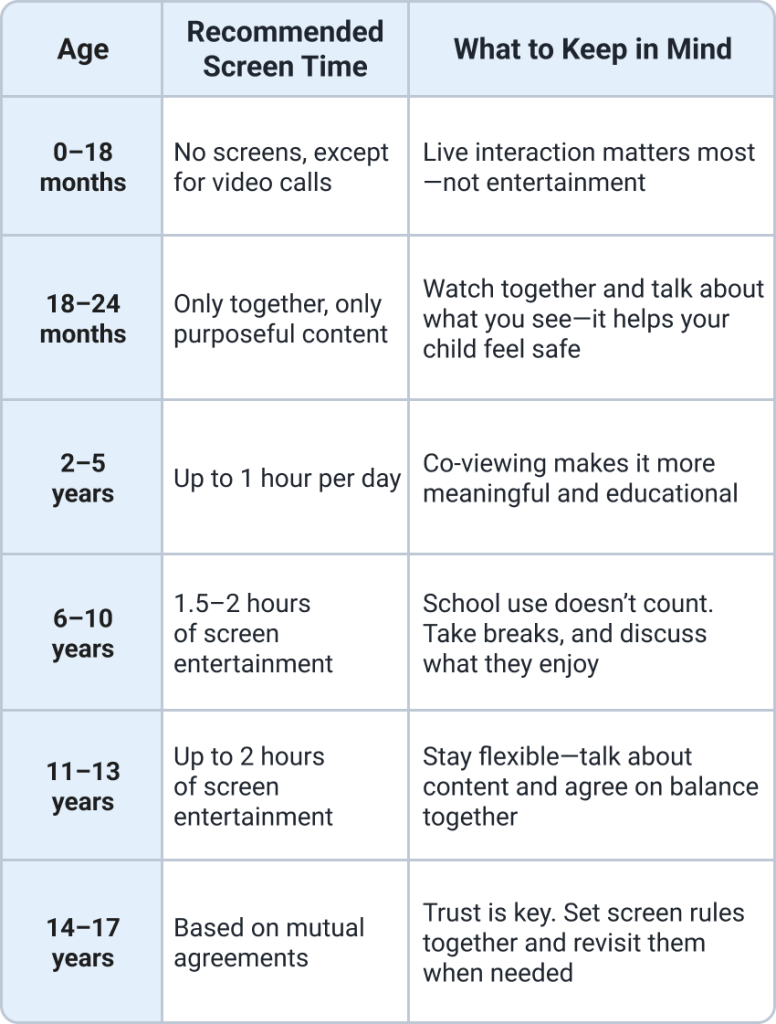How Much Screen Time Is OK?

Cartoons at breakfast, tablets in the car, games after school—screens have become part of everyday life.
But how much screen time is actually okay? It’s not just about limits—what your child is watching, with whom, and why also matter.
👶 Infants: 0–2 years
Both the World Health Organization and the American Academy of Pediatrics agree that until 18 months, it’s best to avoid screens altogether, with one exception: video calls with loved ones.
Babies need real-world interaction: touch, eye contact, and the sound of your voice. From 18 months on, short videos are okay, but only when watched together. Talking about what you see on the screen is important because it helps your child make sense of what’s happening.
👧 Preschoolers: 2–5 years
Experts recommend that preschoolers use screens no more than 1 hour a day, and ideally with a parent nearby. Educational content and active co-viewing are far better than passive watching. When you talk with your child about what they see, it builds their language and thinking skills.
🧒 Younger School-Age Kids: 6–10 years
Here, balance is key. Screen time shouldn’t interfere with sleep, school, or movement.
The American Academy of Pediatrics recommends setting rules together—when and where screens are allowed. For entertainment (not school), 1.5 to 2 hours a day is a healthy limit: breaks, good content, and no screens «just in the background» all help.
👦 Teens: 11–17 years
As kids grow, trust and conversation become more important than strict limits. According to Common Sense Media, teens average 8.5 hours of screen time daily—but that’s not always a problem. The real question is: how are they spending that time?
Help your teen learn to spot quality content, take breaks, and know when it’s time to unplug.

Screen Time by Age
What Matters Most
Screen time is just one part of the picture. It’s also about what your child is watching, how they feel about it, and whether someone is there to guide them.
UNICEF reminds us: watching together and talking about content—from cartoons to games—often helps more than just setting strict time limits.
In the end, what matters most is being there. Children need adults they can trust—not just rules to follow.
References:
- The State of the World’s Children 2024: For every child, a fair chance in a digital world, ЮНИСЕФ (UNICEF), 2024
- The Common Sense Census: Media Use by Tweens and Teens 2021, Common Sense Media, 2021
- Guidelines on physical activity, sedentary behaviour and sleep for children under 5 years of ag, World Health Organization (WHO), 2019
- Media and Young Minds, American Academy of Pediatrics (AAP), Pediatrics, 2016
Проверьте электронный ящик



















